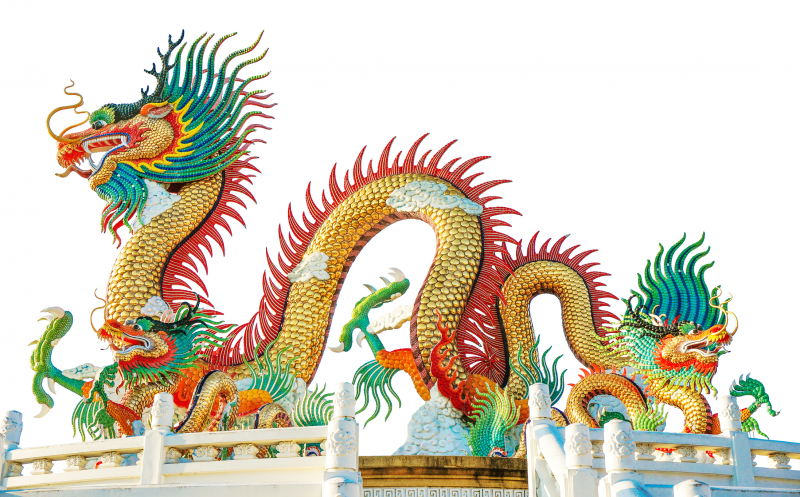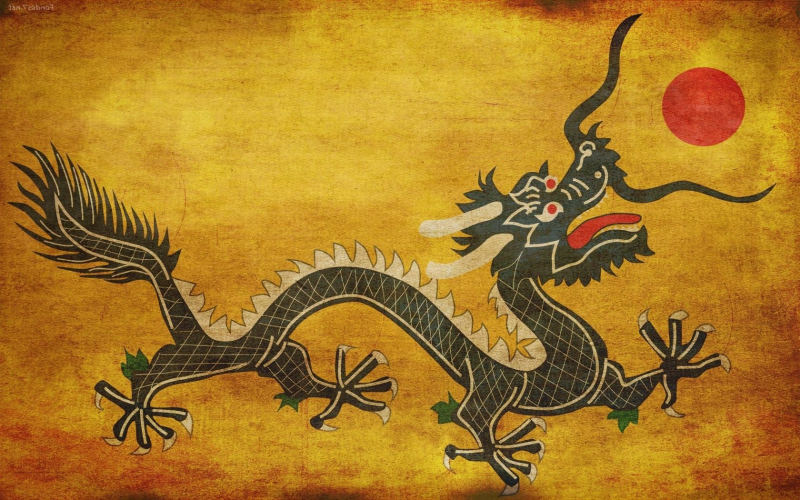Chinese Dragon

Dragons were not just a significant emblem in ancient China; they also symbolized the royal lineage of the country. Dragons are shown in many ancient Chinese artifacts and temple buildings. Ancient Chinese history defies the notion that dragon tales exist, as is the case in the modern west.
The dragon represents abundance and prosperity in the Chinese philosophy of feng shui, which is rooted in Chinese culture and belief. The dragon, also known as lung, long, or loong in Chinese, is strong and can overcome any challenges since it is brave and heroic. Additionally, it serves as a powerful defender of people and possessions.
Dragons were worshiped as gods in ancient China. This historical sign, which dates back to roughly 5,000 BC, became the Chinese emperor's crest. The dragon symbol could only be used by the Emperor. The ancient Chinese emperors claimed to be descended from the dragon gods. This lineage became an ethnic claim that conferred high prestige on individuals. To maintain this position, the emperors erected temples and shrines dedicated to the dragon gods. To further elevate this prestige symbol, they commissioned the construction of pagodas throughout the country and introduced the practice of burning incense and praying to the dragon gods.
Nine is considered to be the emperor's sacred number in Chinese tradition. The dragon king was said to be able to transform into nine different dragon forms namely Horned Dragon, Winged Dragon, Celestial Dragon, Spiritual Dragon, Earth Dragon, Underworld Dragon, Coiling Dragon, Yellow Dragon, and Dragon King. There are over 635 dragons painted on the Beijing Nine Dragon Wall in China, however, there are only nine types of dragons that the dragon king transformed into in order to serve the world.
The number nine is significant throughout Chinese mythology and culture. According to ancient Chinese dragon folklore, the dragon king had nine sons after copulating with various animals, resulting in hybrids. Each son was sent to the planet with distinct responsibilities as Earth's and its people's heir protectors. While the names of the nine sons appear to be inconsistent, their physical characteristics and missions remain consistent.
In 1984, the first known representation of a dragon was found. It was carved out of jade and is known as the Coiled Dragon. The person was discovered in the burial box at an old Hongshan-era cemetery (4700 - 2920 BC). Throughout the Liangzhu era, numerous other dragon jade carvings have been discovered (3300 - 2200 BC).
The Chinese dragon has chin whiskers that look like long tendrils. Deer horns are frequently shown in Chinese dragon paintings. A camel's head is frequently used to represent a dragon's head. The dragon's physical appearance may include rabbit eyes. Chinese dragons have snake-like necks. The abdomen is frequently shaped like a cockle shell. The dragon scales are carp scales. A dragon's claws are similar to an eagle's talons. Tiger paws are used by some dragons instead of talons or claws. The dragon's ears resemble those of an ox.
One of many tales that explains why Chinese people respect dragons is the tale of the four dragons. The Jade Emperor dominated the earth in antiquity. Long Dragon, Black Dragon, Pearl Dragon, and Yellow Dragon requested rain for the world's parched land from the Jade Emperor. People were passing away. The four dragons took it upon themselves to gather water from the lakes and spray it across the heavens because the Jade Emperor consented but never sent the rain. When the Jade Emperor found out what they'd done, he had four mountains built over the dragons to keep them confined for all eternity. The four dragons transformed into rivers that flowed around the mountains. The rivers were dubbed the Long (Yangtze), Black Dragon (Herilongjian), Pearl (Zhujiang), and Yellow River (Huanghe).















